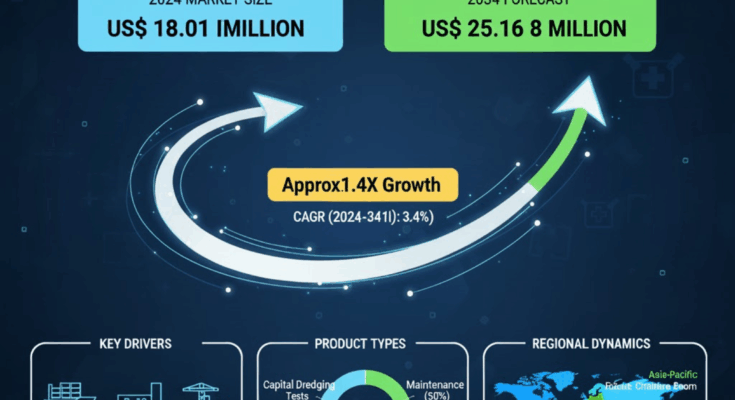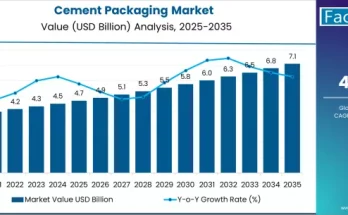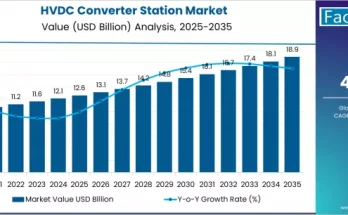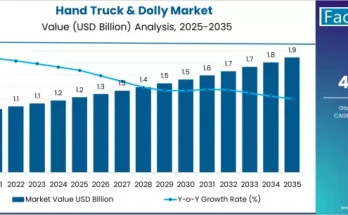The global dredging market is entering a phase of steady growth, with demand rising across maritime trade, infrastructure development, and environmental protection. According to a recent Fact.MR report, the dredging market was valued at USD 18.01 billion in 2024, and is forecast to reach approximately USD 25.16 billion by 2034, registering a compound annual growth rate (CAGR) of 3.4% over the next decade.
Request for Discount on This Research Report: https://www.factmr.com/connectus/sample?flag=S&rep_id=922
Market Overview & Key Growth Drivers
Dredging, the process of removing sediments and debris from water bodies such as rivers, harbors, and coastal zones, plays a critical role in maintaining navigable waterways, expanding port capacity, land reclamation, flood protection, and coastal resilience. Growth in the dredging market is being driven by several converging trends. Rapid growth in international trade means larger vessels and greater volumes of shipping traffic, which requires deeper ports and well-maintained navigation channels. Simultaneously, coastal and urban development is spurring heavy demand for land reclamation, harbor expansion, and shoreline protection.
Environmental concerns and climate change are also major drivers. Rising sea levels, coastal erosion, and extreme weather events are pushing governments to invest in dredging as part of sea-wall reinforcement, mangrove restoration, and coastal protection measures. Moreover, energy infrastructure projects—such as offshore pipeline and cable installations, LNG terminals, and wind farms—require seabed preparation and continuous marine infrastructure upkeep, providing additional opportunities for dredging firms.
Technological Innovation & Operational Trends
Companies in the dredging market are adopting advanced technologies and sustainable practices to improve efficiency and reduce environmental impact. Automation, real-time monitoring, and precision dredging equipment are increasingly being deployed to optimize operations, reduce downtime, and ensure regulatory compliance. New-generation dredgers—such as cutter suction dredgers, trailing suction hopper dredgers, and specialized vessels—are offering improved performance, greater maneuverability, lower emissions, and better handling of different sediment types.
In addition, digital tools—such as sensors to monitor sediment composition, water quality, turbidity, and erosion rates—are helping operators adapt to changing environmental conditions and minimize ecological disturbance. There is also growing focus on sediment reuse and disposal techniques that are more environmentally responsible.
Regional Insights & Market Segmentation
Region-wise, East Asia claimed about 36.5% share of the global dredging market in 2024, making it one of the largest and fastest-growing regional markets. Japan is forecast to see strong growth, with the market projected to reach about USD 1.01 billion there by 2034, underlining ongoing investments in port infrastructure and disaster resilience. North America, led by the United States, is significant—with the U.S. market estimated at USD 3.69 billion in 2024 and projected to rise substantially by 2034. Germany and other European countries are also contributing through inland waterway maintenance, harbor deepening, and environmental restoration projects.
By application, trade maintenance (keeping ports, channels, and waterways navigable), harbor/port expansion, coastal protection, energy infrastructure (e.g., offshore installations), and urban development are among the top contributors to market revenue. Among customer types, government agencies are major clients, as many dredging projects are commissioned or funded by governments keen to support trade, safety, flood control, or environmental goals.
Challenges & Regulatory / Environmental Restraints
Despite the promising outlook, the dredging market faces several constraints. Environmental regulations are tightening globally, with stricter rules around sediment disposal, turbidity control, impact on marine ecosystems, and biodiversity protection. The permitting process for dredging projects can be lengthy, complex, and costly. In many regions, dredging firms must comply with numerous laws and oversight from environmental agencies, which raises project risk and delays.
Cost pressures are also a concern. Operating specialized dredging vessels, maintaining fleets, fuel costs, and equipment wear from abrasive sediments increase capital and operational expenditure. Projects in remote or challenging geographies often require additional logistical support, which adds to costs. Additionally, disruption due to weather, storms, and sediment variability can affect both schedule and cost.
Recent Developments & Innovation Highlights
Recent years have seen several important shifts and innovations in the dredging market. There is increasing deployment of autonomous or semi-autonomous dredgers with better control systems and reduced crew requirements. Real-time environmental monitoring tools are becoming standard in many large dredging projects, helping firms manage regulatory compliance and community concerns.
Some of the major dredging companies have secured large expansion and reclamation contracts in coastal regions. For example, projects involving land reclamation, harbor deepening, and coastal protection in East Asia and the Middle East are pushing demand. There is also growing interest in sustainable solutions—sediment reuse, eco-friendly disposal, and lowering emissions from dredging vessels.
Key Players & Competitive Landscape
The competitive landscape in the dredging market is dominated by specialized marine engineering and dredging service companies with global reach, strong technical capabilities, fleets, and financial strength. Key players profiled in the Fact.MR report include:
-
Royal Boskalis Westminster N.V.
-
Dredging, Environmental and Marine Engineering NV (DEME)
-
China Communications Construction Company Limited
-
Penta-Ocean Construction Co., Ltd.
-
Van Oord
-
Great Lakes Dredge & Dock Corporation
-
National Marine Dredging Co.
-
Hyundai Engineering & Construction Co., Ltd.
-
Dredge America
-
Jan De Nul Group
These firms are investing in fleet modernization, specialized vessel design, automation, sustainable dredging technologies, and expanding into new geographies. Partnerships with governments, port authorities, and coastal infrastructure agencies are also common as a way to secure long-term contracts.
Market Outlook & Strategic Implications
With the dredging market expected to grow from USD 18.01 billion in 2024 to USD 25.16 billion by 2034, with a CAGR of 3.4%, the next ten years look promising for dredging firms, infrastructure developers, port authorities, and investors. Companies able to adapt to regulatory demands, innovate technologically, and maintain cost discipline will be in prime positions to win new contracts, especially in fast-growing coastal and maritime regions.
For governments and regulators, balancing ecological sustainability with the need for maritime infrastructure development will be a critical task. Policy incentive programs, clear permitting frameworks, and environmental protections will shape which projects move forward efficiently.
For investors and service providers, opportunities lie in equipment modernization, sensor-based monitoring, automation, and eco-friendly operations. Expanding into Asian, Middle Eastern, and other coastal growth hotspots, as well as servicing energy infrastructure and offshore projects (wind farms, pipelines), will likely yield strong returns.
Browse Full Report: https://www.factmr.com/report/922/dredging-market



